What Is Keyword Stuffing?
Keyword stuffing is a spammy SEO tactic that involves unnaturally forcing keywords into webpages. With the aim of ranking higher on the search engine results page.
For example, the main content might read like this:

Keyword stuffing may also occur in the following places:
1. Title tags and meta descriptions (which can be used to generate search engine snippets):

2. URLs (webpage addresses):

3. Anchor text (text that hyperlinks are attached to):

4. Alt text (HTML image descriptions used by screen readers and search engines):
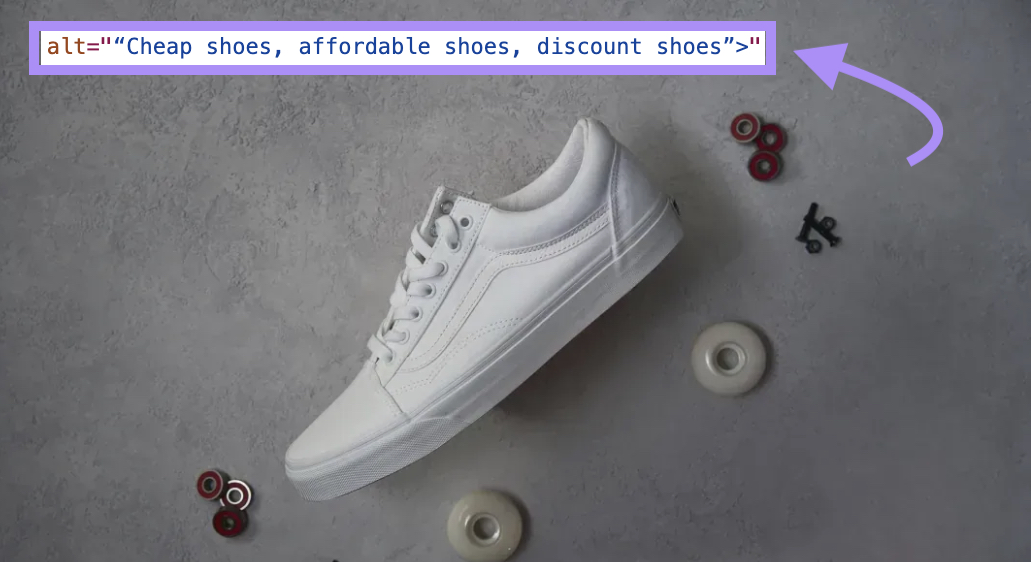
It’s normal for keywords to occur and reoccur within content.
But as our keyword stuffing examples show, it’s unhelpful to place them excessively or unnaturally.
How Keyword Stuffing Affects SEO
Keyword stuffing is bad for SEO because it leads to poor-quality content.
Unnatural keyword usage looks spammy. This can discourage users from interacting with your page or link and harm your brand image.
Also, Google rewards high-quality, person-first content. Meaning if you purposefully stuff a webpage with keywords, it’s unlikely to rank well.
Keyword stuffing also violates Google’s spam policies.
If Google detects that you’ve:
- Stuffed keywords into on-site content (especially at scale) or
- Built backlinks (links to your site from other sites) that use overly keyword-rich anchor text across various domains
You may see your rankings suffer. Or even receive a manual action (also known as a Google penalty). This means that your site will be suppressed or removed from Google search results.
Why Websites Use Keyword Stuffing
Websites use keyword stuffing in a misguided effort to earn higher SEO rankings.
In the early days of SEO, keyword stuffing could lead to higher rankings.
Google’s algorithm treated pages with keywords—or more repetitions of the keyword—as more relevant. And gave weight to keyword-rich backlinks.
Google has since rolled out numerous algorithm updates to devalue or penalize keyword stuffing.
Which means Google understands context and currently ranks pieces based on factors like comprehensiveness and search intent. Rather than how many times you use a keyword.
Also, Google’s current web spam detection systems are highly effective. So keyword stuffing will hurt your performance in search results.
That being said, Google does look for search terms on pages to determine whether they’re relevant to the user:
The most basic signal that information is relevant is when content contains the same keywords as your search query. For example, with web pages, if those keywords appear on the page, or if they appear in the headings or body of the text, the information might be more relevant.
And does use anchor text to understand what linked pages are about.
But you don’t need to use a keyword on a page a certain number of times to rank for it. Or have numerous incoming links with keyword-rich anchor text.
How to Identify Keyword Stuffing
You can manually identify keyword stuffing by reading your content. And checking for the excessive or unnatural placement of keywords.
If you want to bulk analyze content for keyword stuffing, some SEO tools will scrape content (e.g., all your alt text) and export it to a spreadsheet.
But this can still be a time-consuming and subjective process. So, let’s learn how to speed things up with two Semrush tools: On-Page SEO Checker and Backlink Audit.
Analyze Your Site with Semrush’s On Page SEO Checker
To check your on-site content more efficiently, import your pages and their target keywords into Semrush’s On Page SEO Checker.
The tool calculates keyword density (i.e., what proportion of words are keywords) in the following tags:
- <body>: The body tag, which should contain your main content
- <h1>: The H1 tag, which should contain your on-page title
- <meta>: The meta tag, which should contain a page description
- <title>: The title tag, which should contain your off-page title
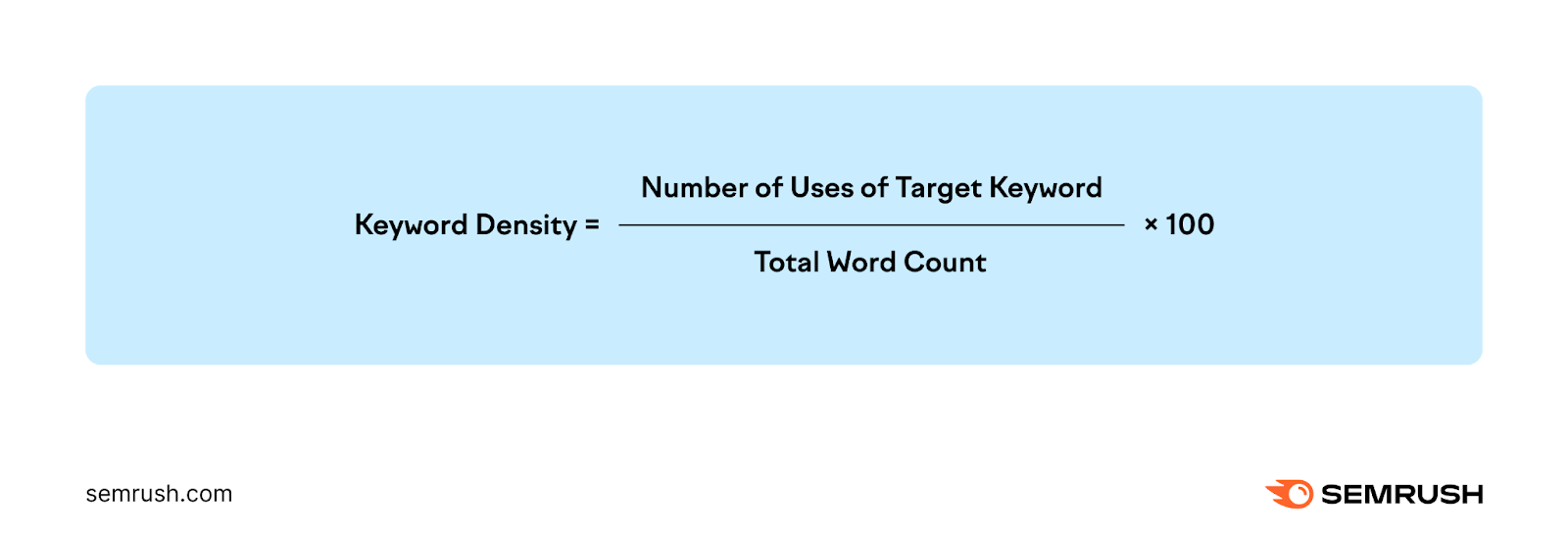
Then compares your keyword densities against your top-ranking rivals’ keyword densities. To see whether there’s a disparity.
The tool also compares many other on-page SEO factors. And provides recommendations accordingly.
After setting up, scroll down to “TOP pages to optimize.” And click “# ideas” alongside your highest-priority page.
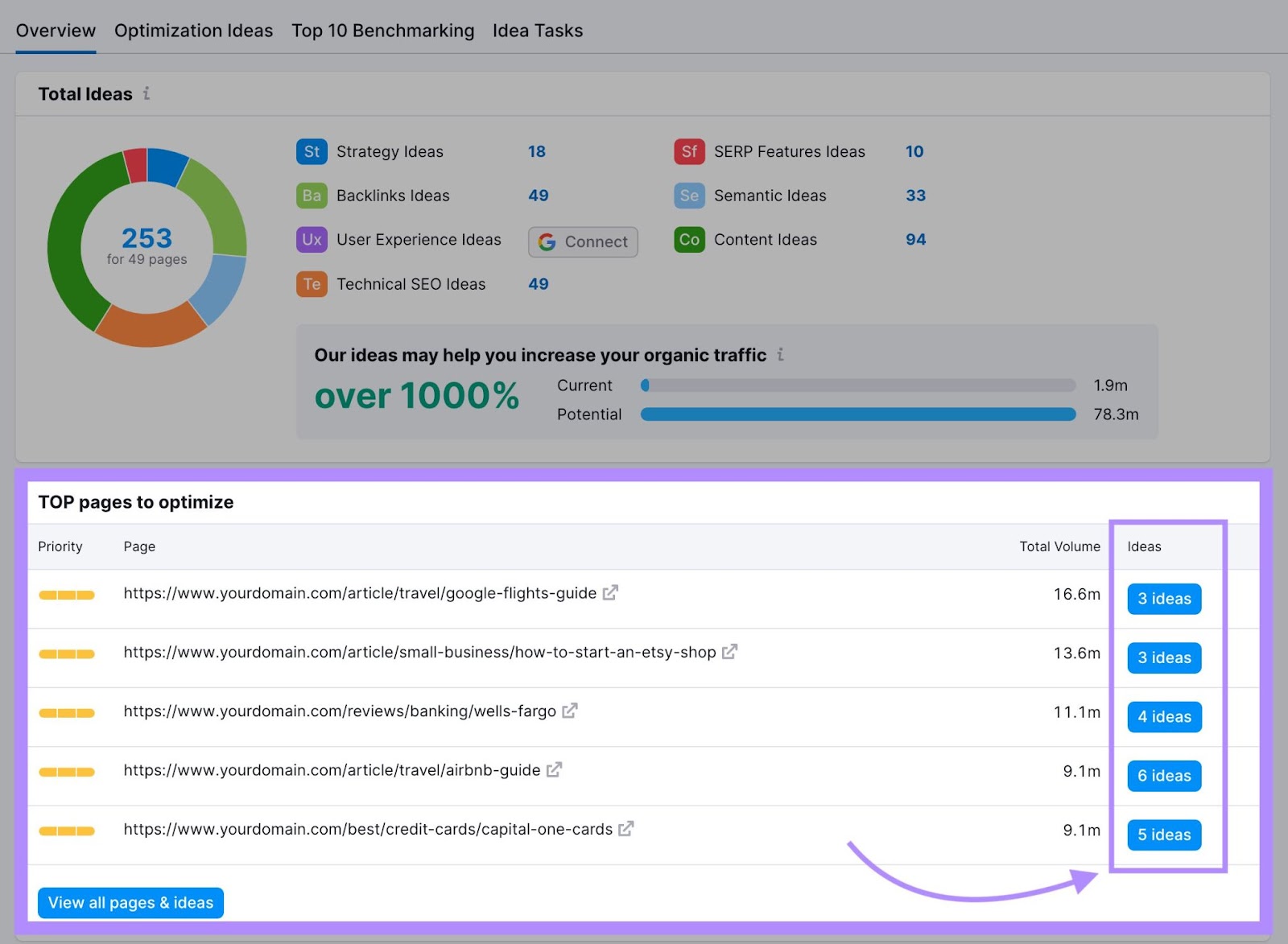
Go to the “Content” section to see whether your page has stuffed keywords.
If not, you’ll see a note like this:

If yes, you’ll see a recommendation like this:

Click “See detailed analysis” for a keyword usage breakdown.
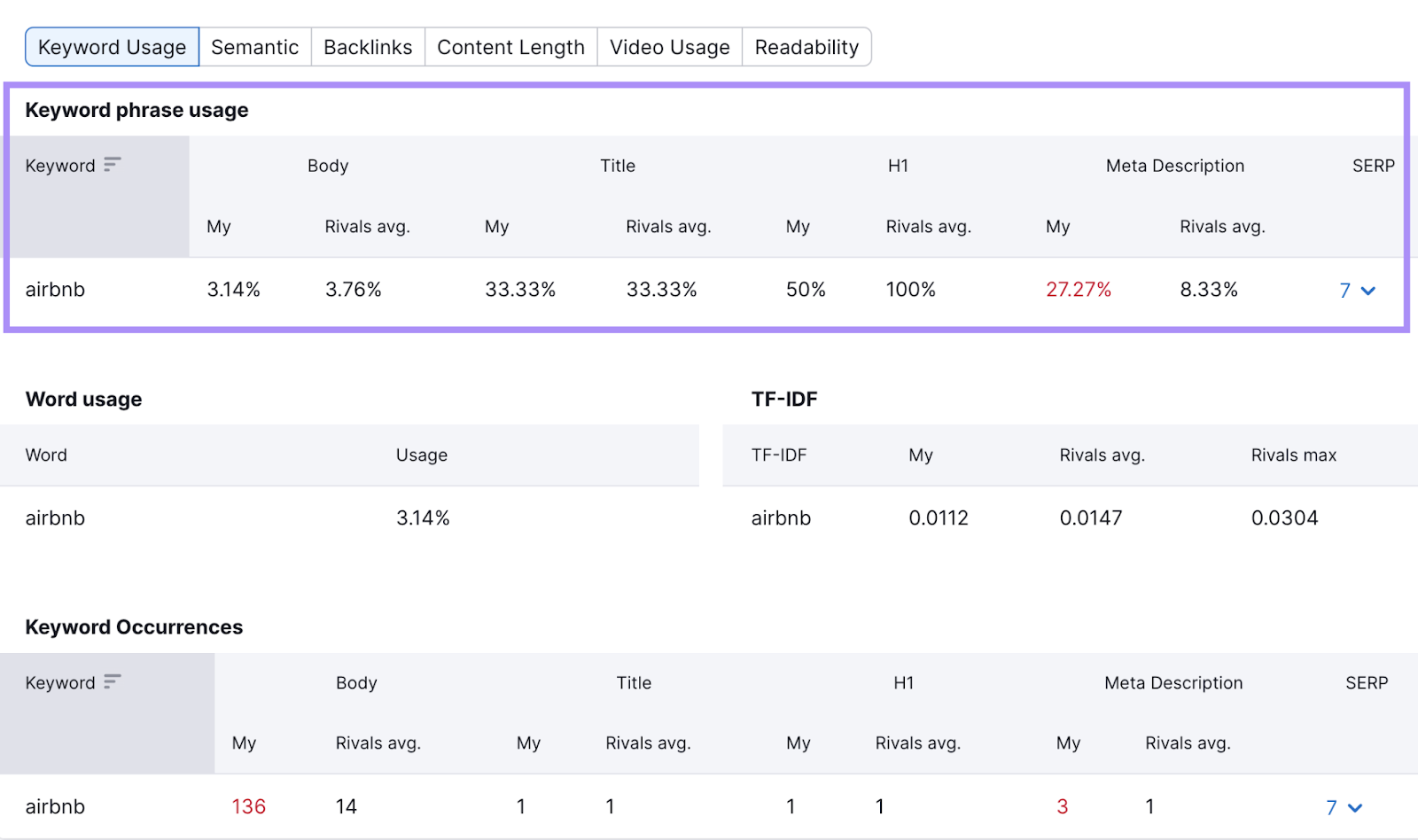
If your keyword density is significantly higher than top-ranking competitors’, rewrite your content. Making sure to use keywords more naturally.
Don’t forget to apply the other optimization ideas, too.
Check Backlinks for Keyword Stuffing
To check your backlinks for over-optimized anchor text, use Semrush’s Backlink Analytics tool.
Enter your domain and click “Analyze.”

Then, go to the “Anchors” report. And check the “Anchor Text” column for keyword-rich anchor texts.
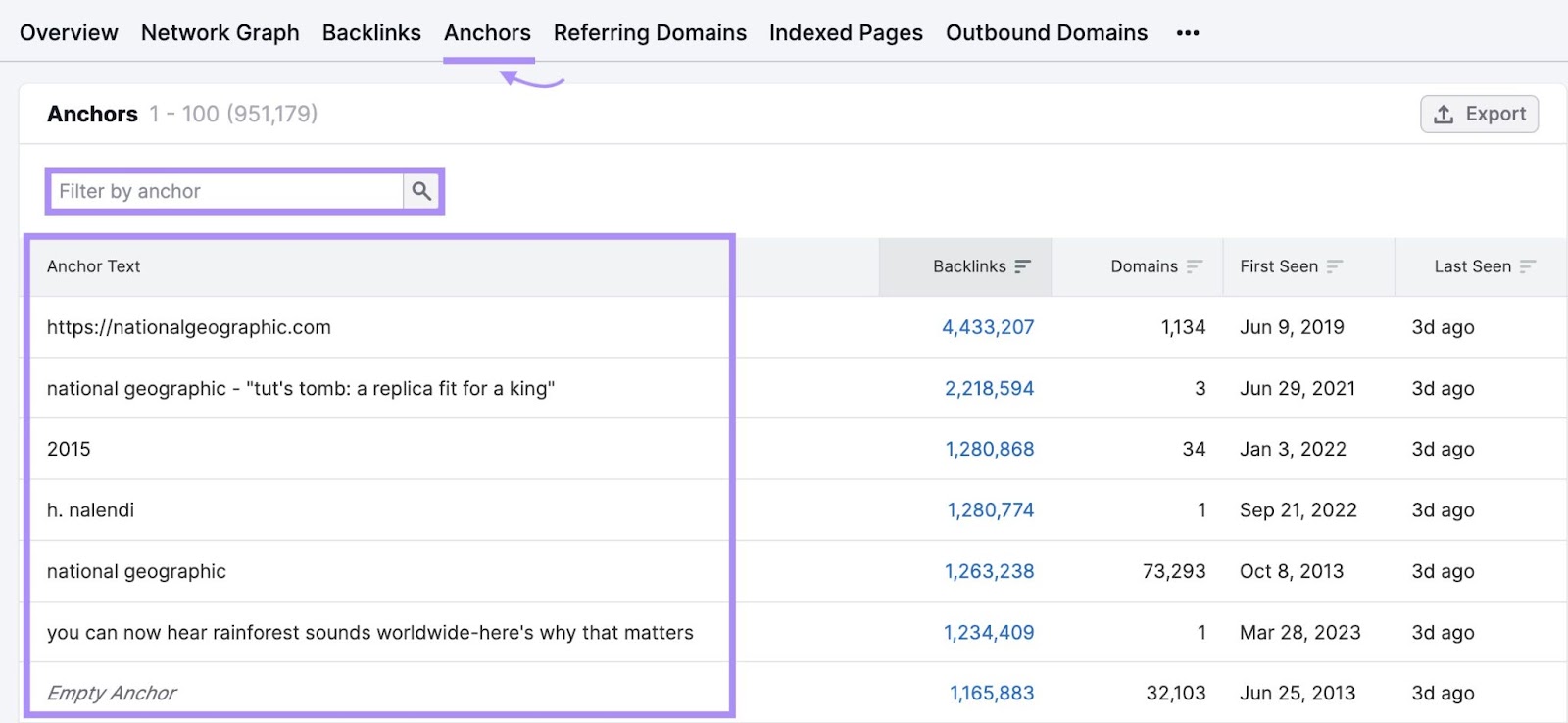
Alternatively, use the “Filter by anchor” feature to focus on particular terms.
The potentially riskiest anchors are:
- Money anchors, which exactly match a keyword you’re trying to rank for
- Compound anchors, which contain your brand name with another word or term
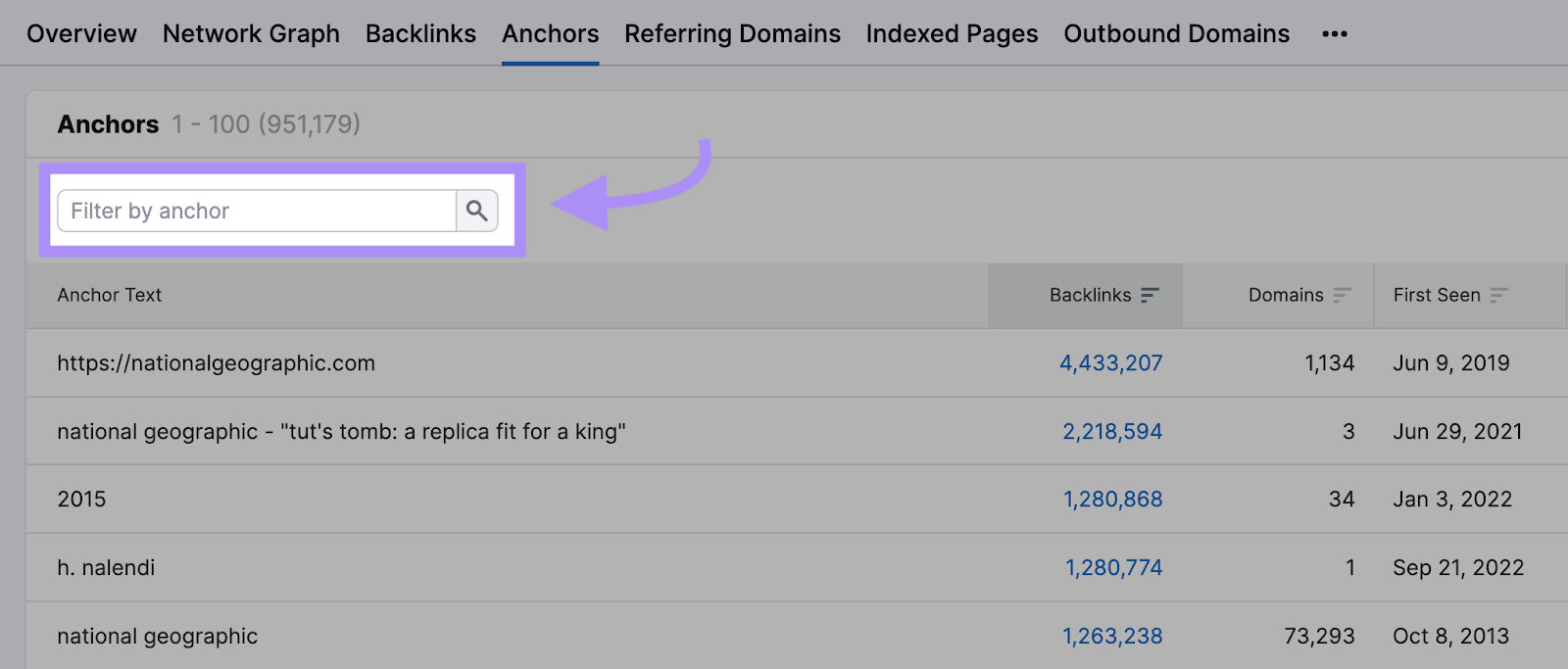
If you have too much keyword-rich anchor text across multiple domains, these backlinks could do more harm than good. Particularly if you have a disproportionately large percentage of keyword-rich anchors compared to other kinds of anchor text.
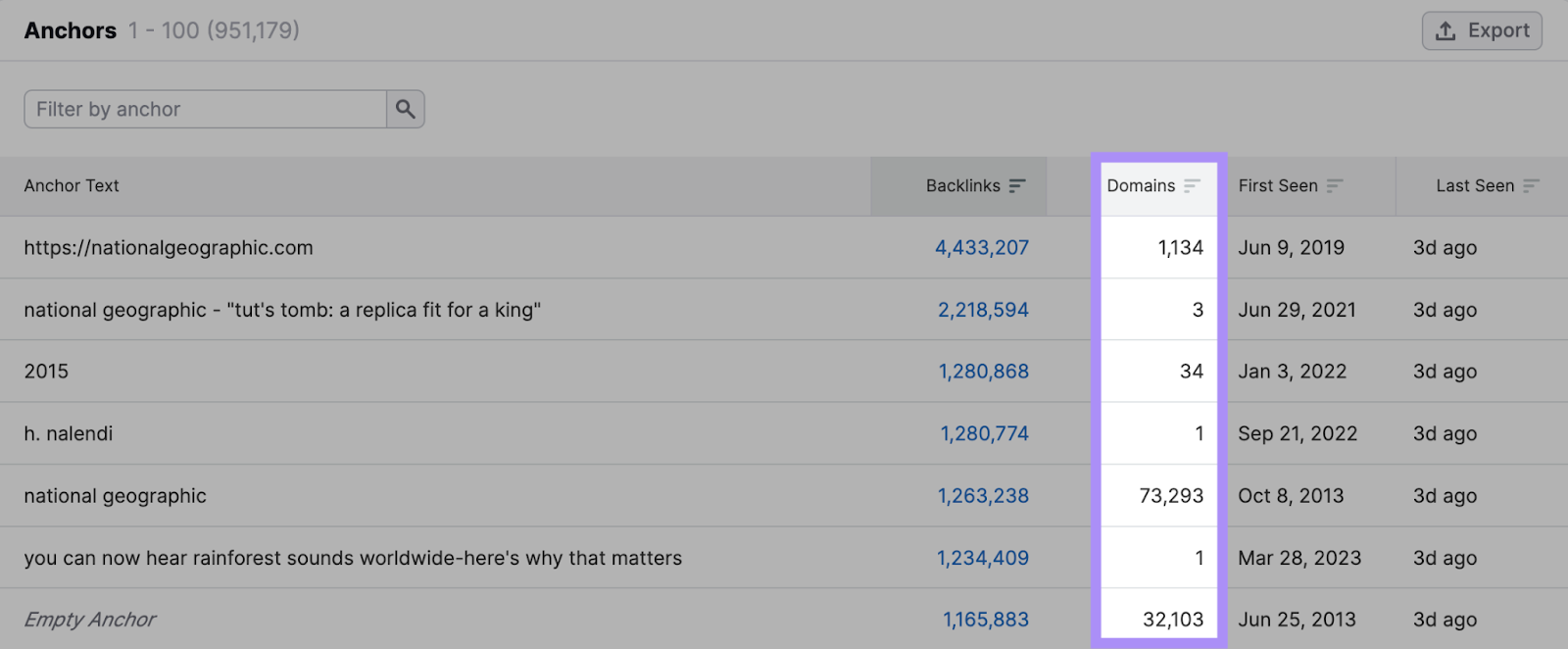
Check out our toxic backlink guide for advice on dealing with this problem.
How to Avoid Keyword Stuffing
Here are four tips to help you avoid keyword stuffing:
1. Focus on a Handful of Keywords Per Page
It’s harder to avoid keyword stuffing if you target every keyword that’s relevant to your page.
To give you an idea, over 30,000 keywords in the U.S. contain “cheap” and “shoes.” According to Semrush’s Keyword Magic Tool:
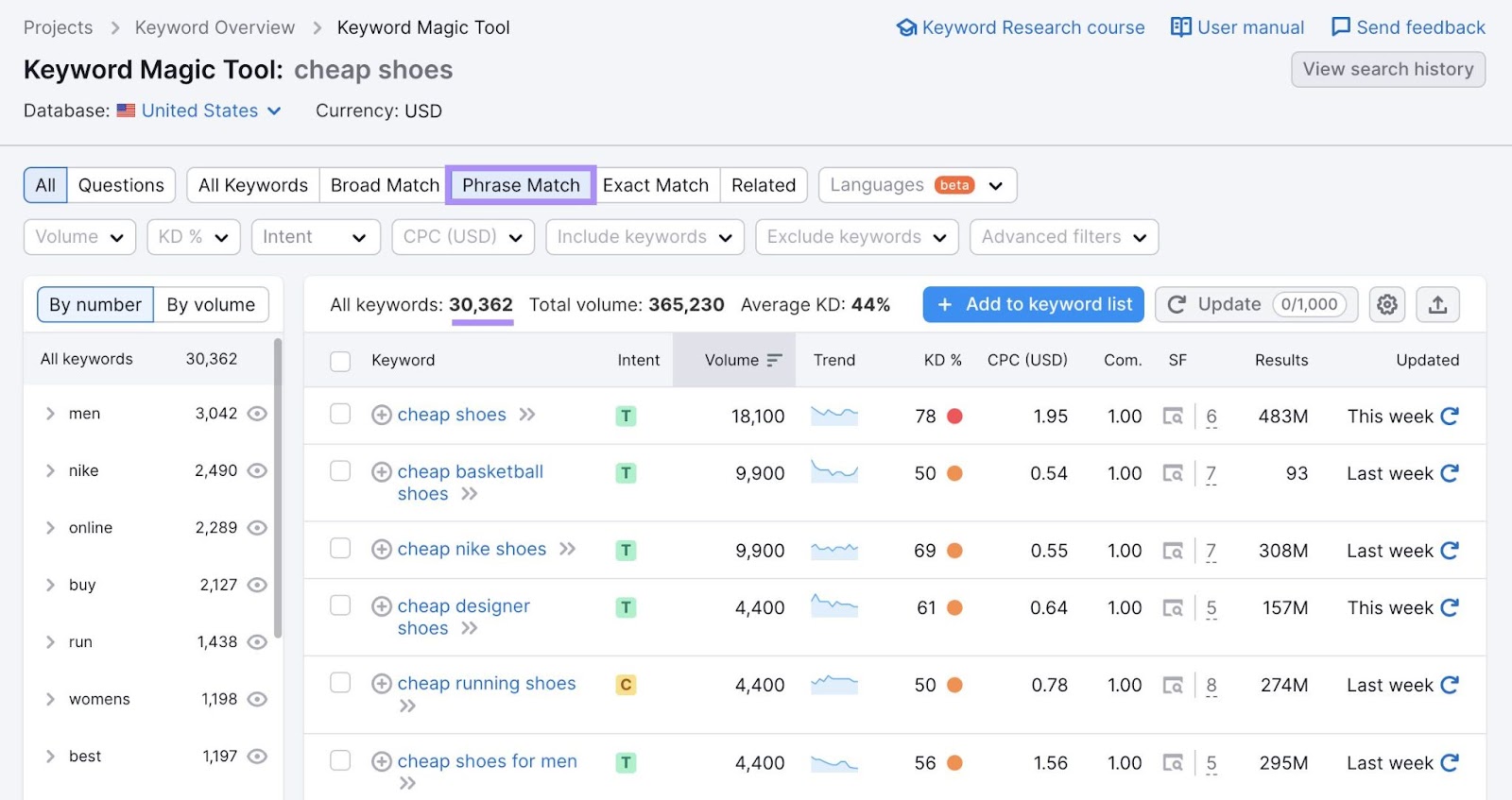
Keyword analysis allows you to prioritize keywords based on numerous factors, including:
- Search intent: The purpose behind the user’s search
- Keyword difficulty: How hard it will be to earn a high organic ranking
- Search volume: The average number of searches per month
For each page, we recommend that you pick one primary keyword (the main keyword you want to target).
And one to five secondary keywords (other keywords you want to target). The larger the scope and depth of your content, the more secondary keywords you can safely include.
Further reading: How to Do Keyword Research for SEO
2. Follow On-Page SEO Best Practices
On-page SEO best practices are tried-and-tested ways to help your webpages rank higher.
Let’s look at some key do’s and don’ts:
- Do focus on creating content for users, not search engines
- Do include your primary keyword in the title tag, meta description, H1, and first paragraph of body content
- Do use related keywords and keyword fragments to make your content read more naturally
- Do use secondary keywords in the body content and subheadings, where relevant
- Do write descriptive alt text for images and incorporate keywords where relevant
- Do use descriptive anchor text for links and incorporate keywords where relevant
- Don’t use grammatically incorrect keywords (e.g., “cheap shoes men”)
- Don’t force in keywords where they don’t make sense
- Don’t try to achieve a particular keyword density
- Don’t use lots of similar keywords in close succession
- Don’t write about an irrelevant subtopic just to target a keyword
You can also learn a lot by analyzing the top-ranking pages for your target keyword.
Semrush’s SEO Content Template makes it easy.
Enter your target keyword(s), choose your audience, then click “Create content template.”

The tool will analyze the top 10 unpaid results for your target keywords.
To provide a variety of recommendations:
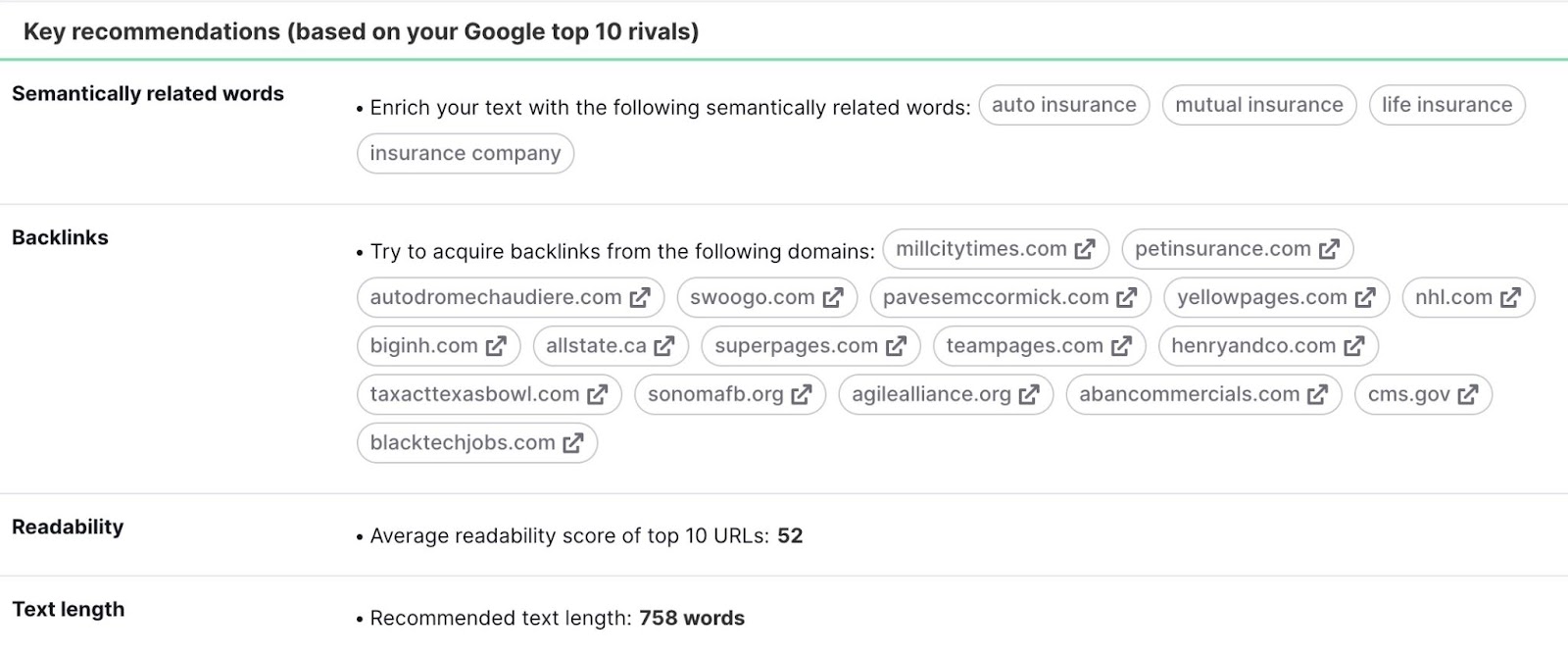
You can even see how competitors use your target keywords:
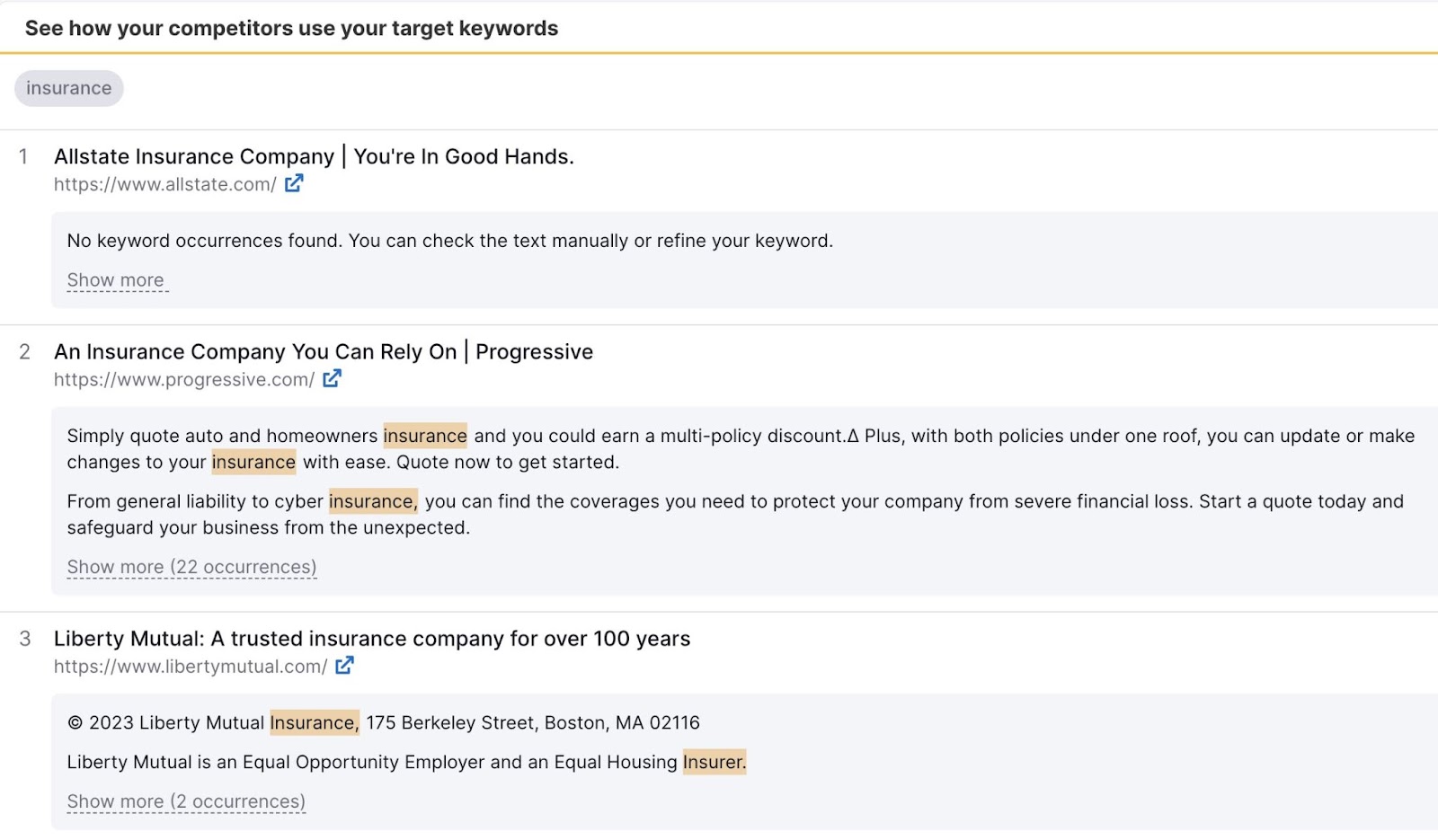
This information can help you construct an effective keyword optimization strategy.
Further reading: On-Page SEO Checklist
3. Draft Your Content in Semrush’s SEO Writing Assistant
If you draft your content in Semrush’s SEO Writing Assistant, the tool highlights any overused keywords.
Like this:
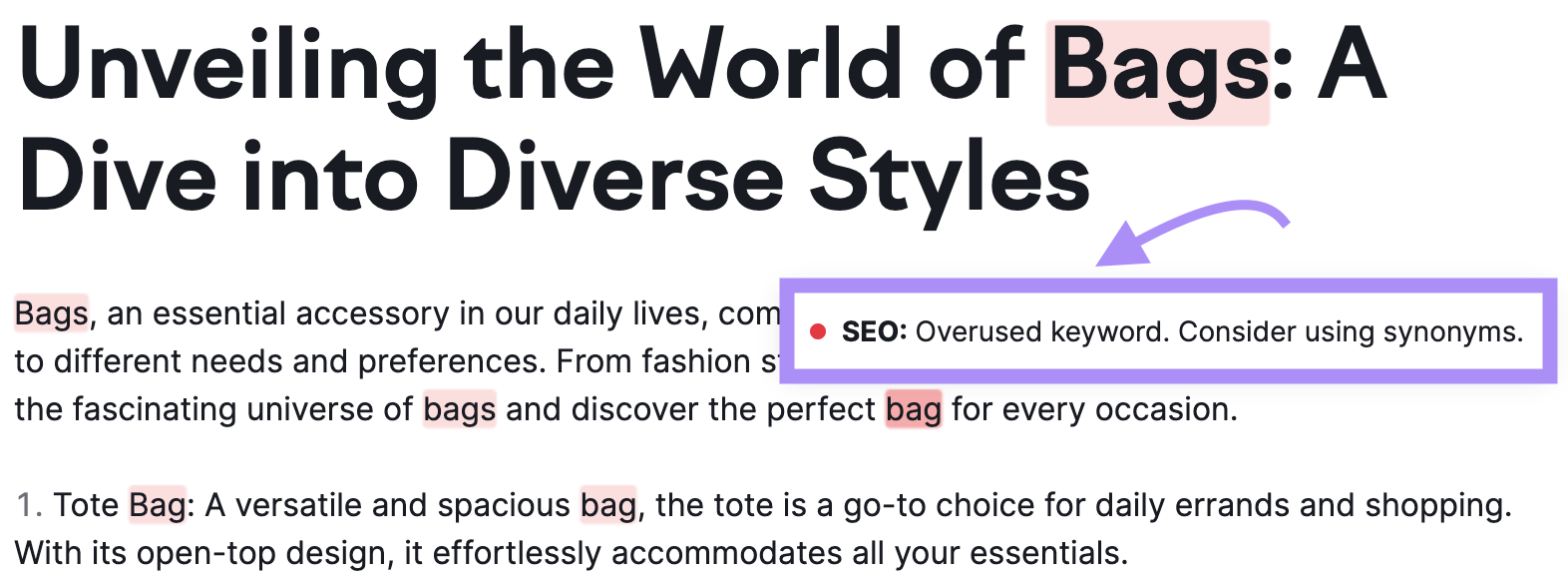
You can also check for keyword stuffing in the “SEO” section of the sidebar:
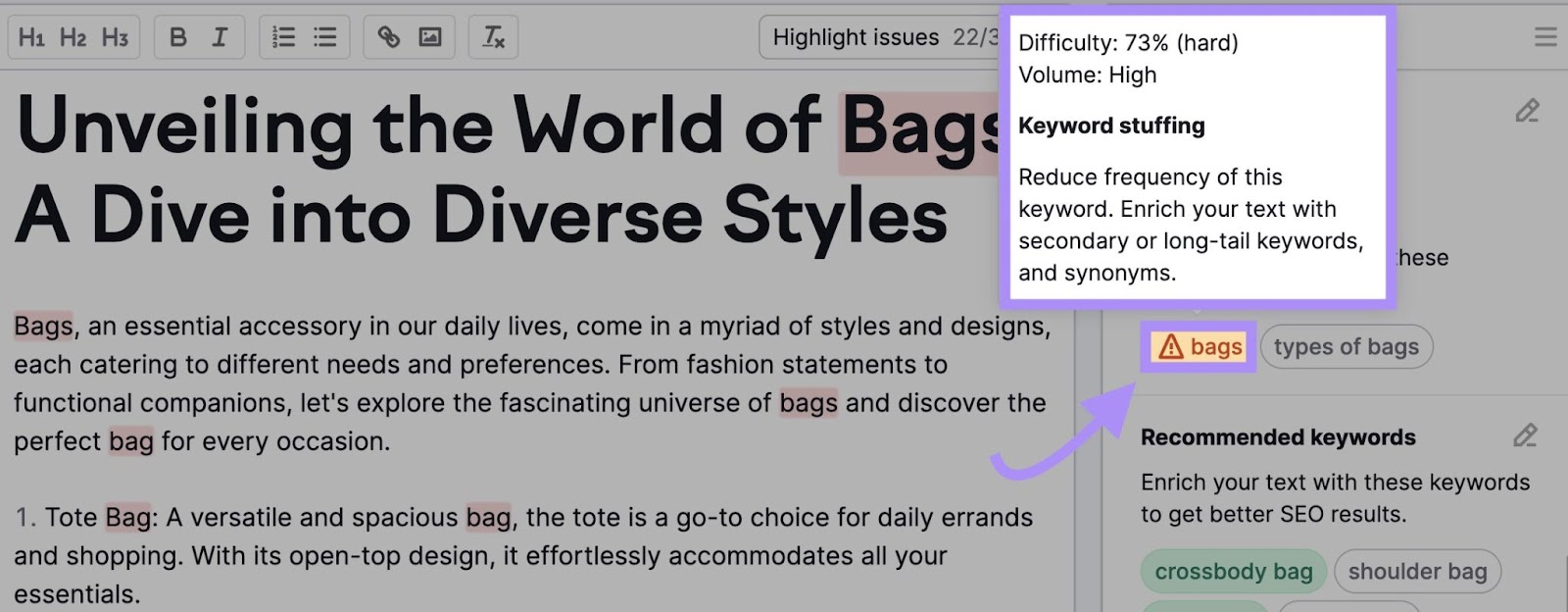
This allows you to fix issues you might have otherwise missed.
The SEO Writing Assistant also shows whether you’ve missed any target keywords.
And suggests semantic keywords (conceptually related keywords) that can make your content read more naturally.
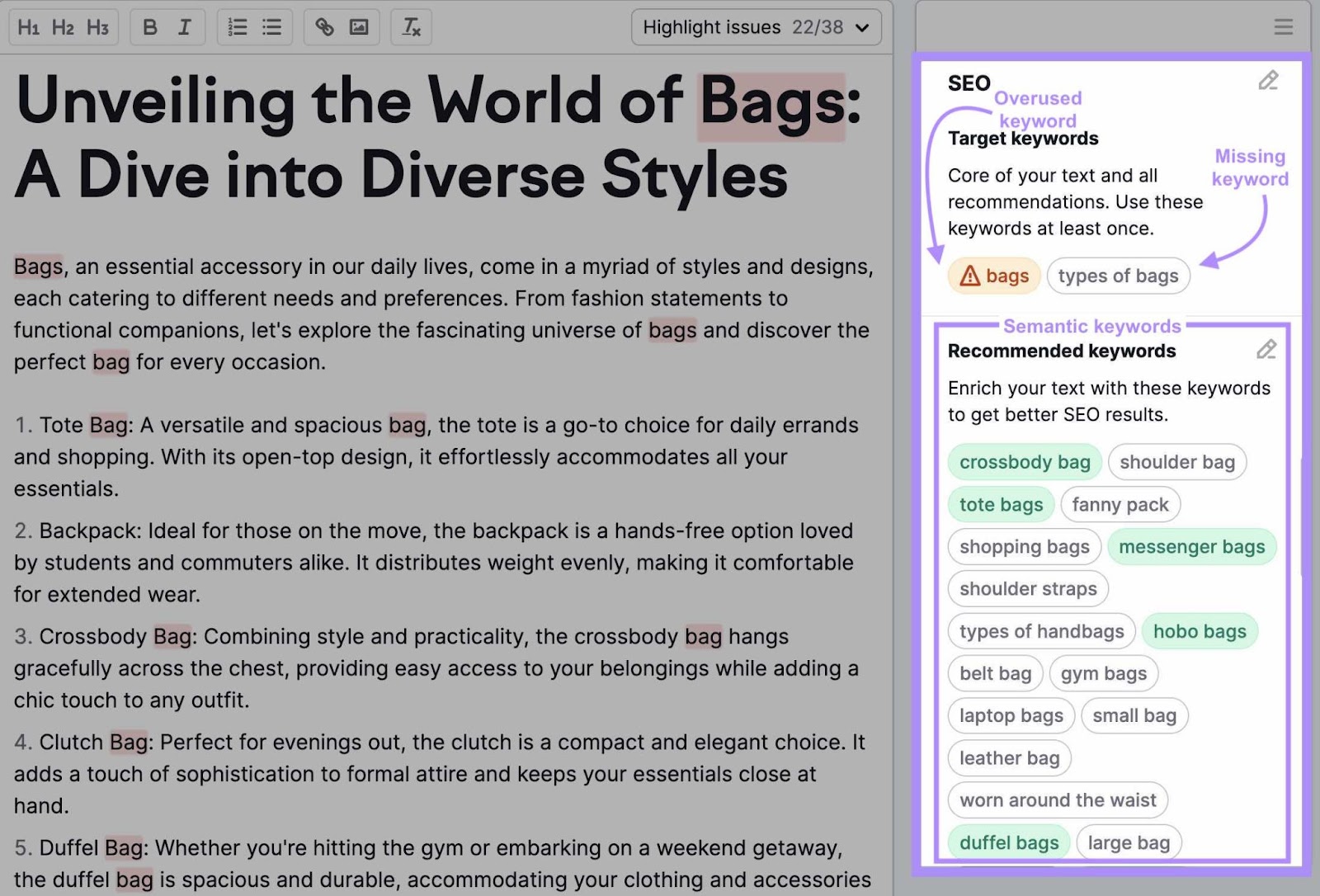
If you need help improving your draft, take advantage of the Smart Writer tools.
You can rephrase, simplify, expand, or summarize content in one click. Or ask AI a question.
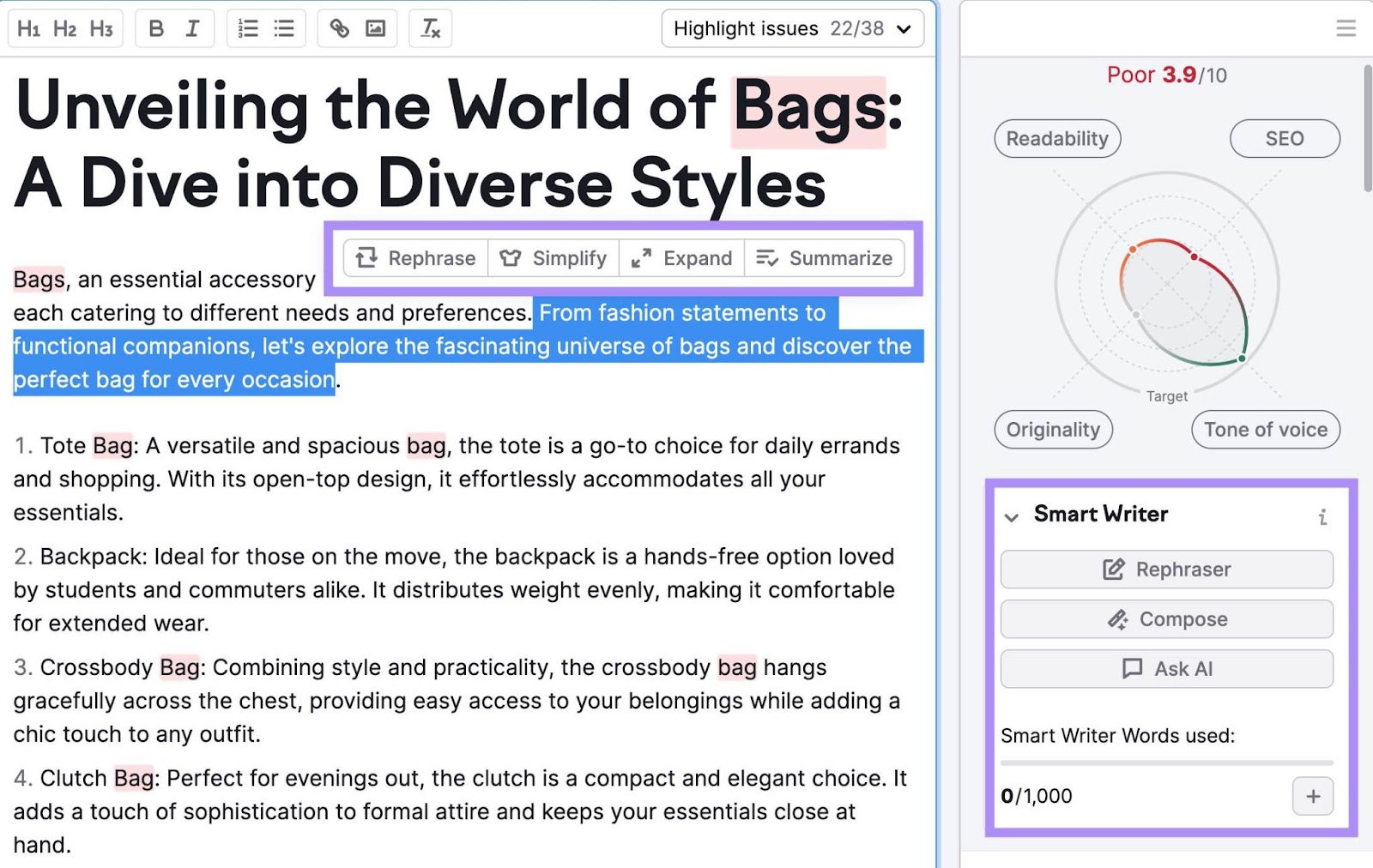
In addition to following the tool’s recommendations, read your content aloud. To ensure it reads naturally.
You could also ask a teammate to edit your article.
4. Choose Backlink Anchor Text Carefully
When building links to your site, avoid stuffing keywords into the anchor text.
Only link to your site where it’s natural and helpful to do so. And choose anchor text with readers in mind—not search engines.
Healthy backlinks include a variety of anchor text types, including:
| Anchor Text Type | Example |
| Branded | Nike |
| Brand + keyword | Nike sneakers |
| Exact match keyword | sneakers |
| Partial match keyword | range of sneakers |
| Related keyword | casual shoes |
| Naked link | https://www.nike.com/ |
| Generic | click here |
| Image | [Photo of Nike sneakers] |
Optimize Your Content with Semrush
Semrush has all the tools you need to avoid keyword stuffing, create SEO-friendly content, and build quality backlinks, including:
- Keyword Magic Tool: Find the best keywords for any page
- On Page SEO Checker: Learn how to improve your existing content
- SEO Content Template: Get SEO recommendations for new content
- SEO Writing Assistant: Check your content drafts in real time
- Backlink Analytics: Analyze your and your rivals’ backlink profiles
Sign up now to try them out.
